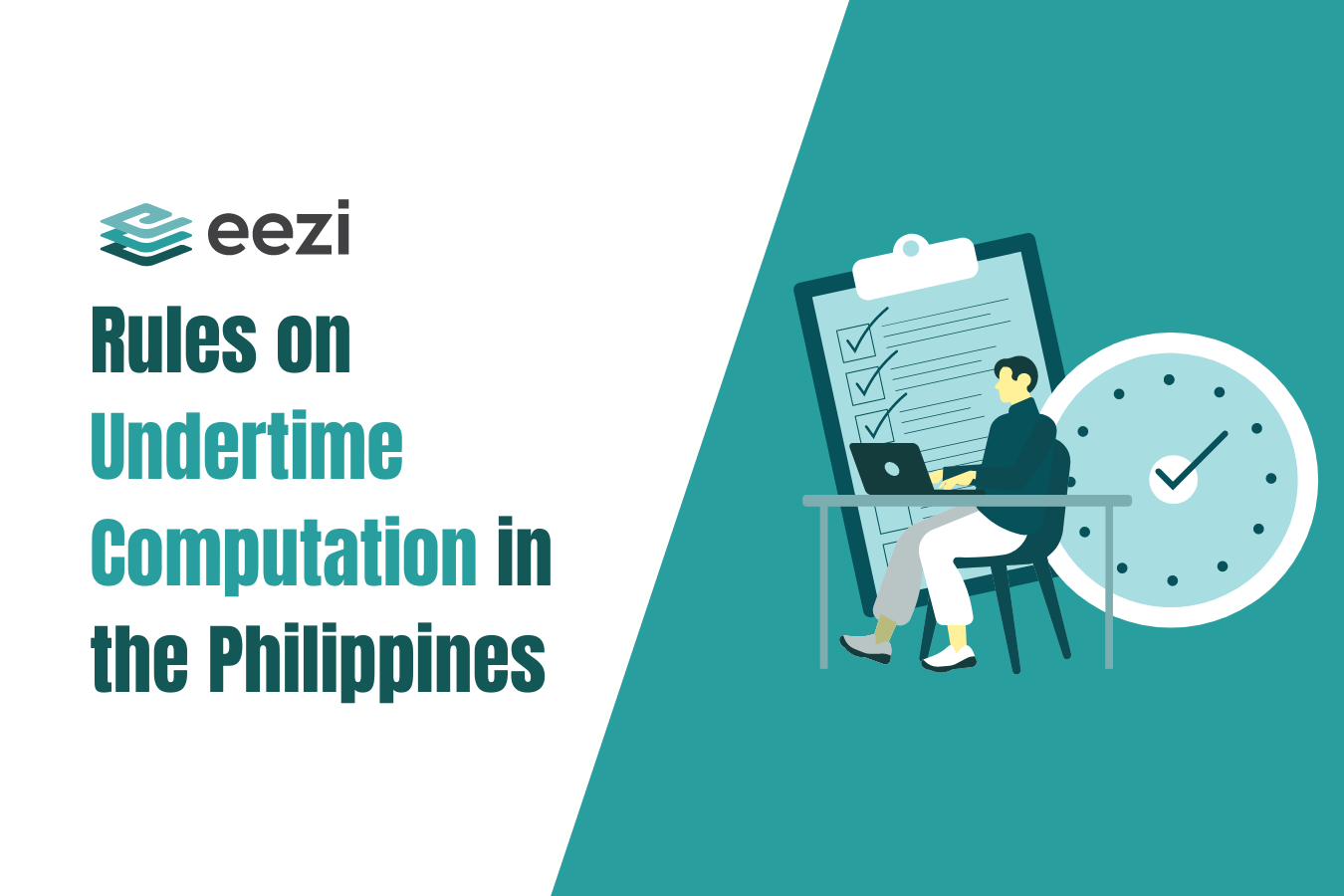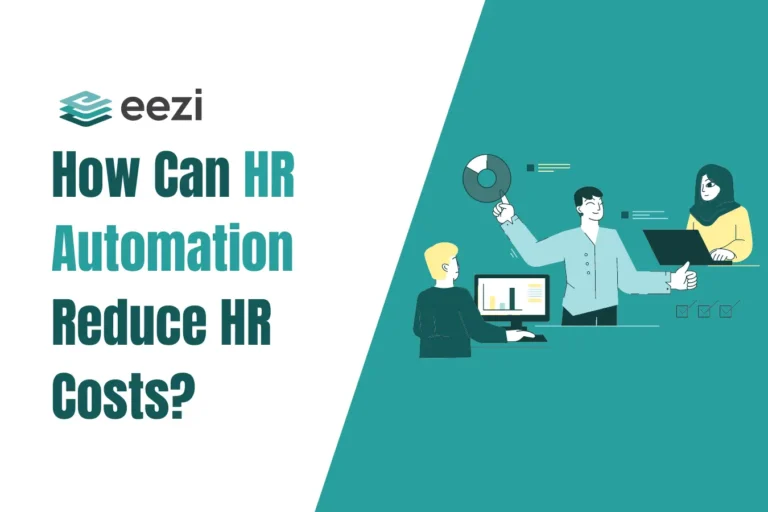Accurate undertime computation is also a crucial part of payroll computation. See how it contributes to a harmonious work environment, respects employees, and complies with labor laws.

What is Undertime Pay in the Philippines?
Undertime pay in the Philippines refers to compensation provided to employees when they work fewer hours than their regular shift, typically set at eight hours, excluding breaks. Any time worked below this threshold is considered undertime.
This compensation addresses the gap in working hours resulting from early departure or unexcused absences. It’s important to note that undertime pay is calculated based on the hourly rate and is deducted from the worker’s daily rate.
The specific rules and calculations for undertime pay can vary depending on factors such as the employment contract, company policies, labor regulations, and Philippine labor laws. Therefore, it’s advisable for employees to consult these sources to understand how undertime pay is handled in their specific work context.
What are the rules for undertime work in the Philippines?
According to the Labor Code of the Philippines, undertime work on a business day cannot be compensated by working overtime on the following day. This practice is discouraged because the overtime rate is higher than the regular hourly rate, making it more costly for employers when employees work fewer than eight hours.
Additionally, granting an employee leave on a different day of the week does not exempt the employer from the obligation to pay the additional compensation required, as stipulated in Article 88 of the Labor Code of the Philippines.
The proper procedure is for the employer to deduct the undertime hours from the accrued leave balance while ensuring that the worker receives the overtime pay they are entitled to. This approach aligns with the labor regulations in the Philippines and ensures fair compensation for both employers and employees.
What is considered an undertime?
In the Philippines, undertime refers to a situation where employees are expected to work eight hours a day, excluding breaks, typically from Monday to Friday, but they leave work before completing their required hours. Some industries may require employees to work from Monday to Saturday.
It’s essential to differentiate undertime from other work-related terms:
- Late Arrival: When a worker arrives after the scheduled start time, it’s considered being late. Companies often have policies in place to address lateness, which may include wage deductions.
- Half-Day: Half-day occurs when an employee works for only half of the required hours on any given day.
- Absences: Absences happen when an employee doesn’t show up for work for the entire day. To avoid consequences, employees typically need to provide advance notice to their employer for any planned absences.
Understanding these distinctions helps both employers and employees navigate workplace policies and regulations effectively.
Several reasons to leave work early
Leaving work early has various effects on companies in terms of workload distribution, reduced productivity, decreased availability, and work disruption.
So, to avoid or at least minimize those effects on work productivity, there must be effective communication between employer and employee. So that you know, an employee should communicate beforehand to request or write an advance notice of an early leave during working hours.
Below are several reasons an employee might have undertime work and should be recorded in their time log for documentation.
- Home Emergency
- Family Emergency
- Personal Injury or Illness
- Medical Appointment

How to keep track of your employee hours
Keeping accurate records of employee hours is crucial for both employers and employees. It ensures fair compensation, helps manage schedules, and simplifies payroll processes.
Timekeeping methods
When tracking employee hours, selecting the appropriate timekeeping method is essential. Consider the following options:
Traditional Time Clocks
Traditional time clocks require employees to punch in and out using time cards physically. It provides a tangible record of work hours but may be prone to errors and requires manual calculation.
Digital Time Clocks
Digital time clocks, often equipped with biometric features or ID cards, offer a more accurate and streamlined timekeeping approach. These systems automatically calculate hours worked and can integrate with the payroll system for easy processing.
Mobile Apps
Mobile timekeeping apps allow employees to clock in and out using their smartphones. They often include features like geolocation tracking and enable real-time monitoring of employee hours.
Time-Tracking Software
Implementing time-tracking software can significantly simplify the process of managing employee hours. Choose a software that offers features such as automated calculation, scheduling integration, and reporting and analytics. Make sure to use software that allows payroll system integration to reduce workload.
Undertime computation: Hourly and monthly rates in the Philippines
Undertime happens when an employee works fewer hours than their scheduled working hours. As part of the company, HR Team should know the essentials to compute undertime correctly to ensure that employees receive fair compensation and deductions.
We will provide formulas and examples to help you determine the correct undertime deduction for hourly and monthly-rate employees in the Philippines.
Determine the Total Hours Worked
For undertime computation, we first must determine the total hours an employee worked.
The total number of working hours per day for full-time employees is typically eight. To compute them, subtract the hours the employee was absent or late from their scheduled working hours.
Example:
Employees are scheduled to work from 8 am – 5 pm with a 1-hour lunch break. If the employee arrives at work at 9 am and leaves at 4 pm, the total would be 6 (9 am – 12 pm and 1 pm – 4 pm).
Calculating the Deduction
You can calculate the undertime deduction once you have determined the hours worked.
For hourly-rate employee formula:
Total Hours Worked x Hourly Rate x 1/8
Example:
An hourly-rate employee has a rate of Php 100 per hour and works for 6 hours instead of the scheduled 8 hours.
The undertime deduction would be Php 75 (6 hours x Php 100 x 1/8).
For monthly-rate employee Formula:
Daily Rate x No. Of Working Days in a Month x Total Nos. of Hours Absent/Total Number of Working Hours in a Day
Example:
A monthly-rate employee has a salary of Php 30,000 per month and is absent for 2 hours.
If the employee’s daily rate is Php 1,000, and the number of working days a month is 20, the undertime deduction would be Php 250 (Php 1,000 x 20 x 2/8).
Round Off the Deduction
To ensure the undertime deduction is correct, round it to the nearest peso.
Example:
If the computed undertime deduction is Php 75.50, it should be rounded to Php 76.
You can accurately calculate undertime deductions by determining the hours worked and using the appropriate formulas.
Remember always to round off the deduction to the nearest peso. With these simple steps, you can effectively manage undertime and avoid errors in compensation and payroll.
How to manage undertime and absences in the workplace?
Managing undertime and absences in the workplace is essential for maintaining productivity and ensuring fair compensation. Below are the strategies to teach employees, track and correct undertime and absences, and ensure accurate payroll processing.
Educate and train employees
One of the best practices to manage undertime and absences is to educate employees about attendance policies and expectations. Clearly define the company’s policies regarding tardiness, absences, and the procedures for reporting and requesting time off.
Regularly communicate these policies through employee handbooks, training sessions, or company-wide announcements to ensure they know their responsibilities and the consequences for non-compliance.
Implement an attendance tracking system
To effectively manage undertime and absences, use an attendance tracking system or log where employees can record their details.
It can be an electronic system, spreadsheet, or physical logbook.
Encourage them to log their attendance accurately, providing details such as the date, time of arrival, departures, and any reasons for tardiness or absences.
Monitor and address absences promptly
Regularly monitor employee attendance records to identify patterns of absences or tardiness.
Promptly address any recurring issues to understand the reasons behind their absences and to provide appropriate guidance and support by conversing with workers.
Please ensure absences are correctly documented and aligned with applicable leave policies and regulations.
Encourage proactive communication
Create a supportive environment where workers feel comfortable discussing their absences or undertime deductions in advance.
Please encourage them to communicate any anticipated schedule conflicts or personal matters affecting attendance. It allows for better planning and rescheduling, minimizing the impact on productivity.
Regularly review and update policies
Periodically review and update attendance policies to ensure they remain relevant and align with the organization’s evolving needs.
Seek feedback from employees to identify any challenges or areas for improvement in managing undertime and absences.
Based on these insights, make necessary adjustments to policies, procedures, and systems.
Undertime computation made eezi
Enroll your business in eezi and save time and resources by using accurate undertime computation.



